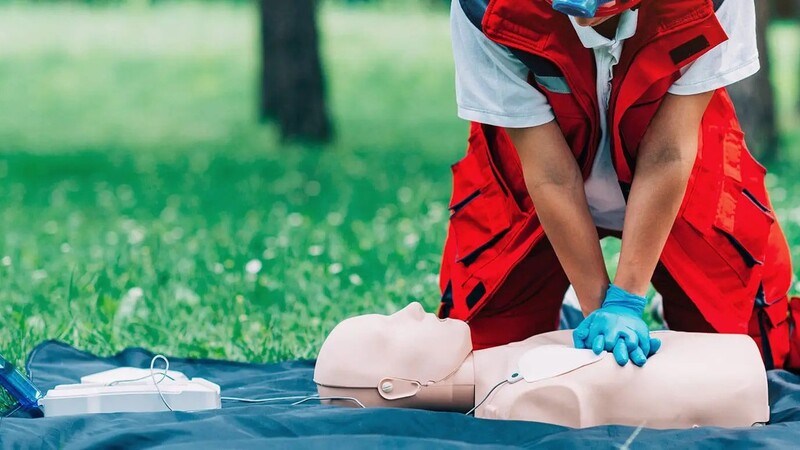Basic Life Support (BLS) training is an essential component of healthcare provider education. Whether you’re a doctor, nurse, EMT, or other healthcare professional, knowing how to perform life-saving techniques in emergency situations can make a significant difference in patient outcomes. While CPR is often associated with BLS, this training covers much more, equipping healthcare providers with the necessary skills to handle a variety of critical emergencies.
In Phoenix, AZ, healthcare providers can access BLS training that goes beyond basic CPR, teaching advanced techniques to ensure that patients receive the best possible care during emergencies. BLS training courses include a variety of life-saving skills, from adult CPR certification to the use of automated external defibrillators (AEDs), and are designed to prepare healthcare professionals to respond quickly and effectively in emergencies.
What Is Basic Life Support (BLS)?
Basic Life Support (BLS) refers to a set of life-saving procedures that healthcare providers use when a patient is experiencing a medical emergency, such as cardiac arrest or respiratory failure. BLS training is designed to ensure that healthcare professionals can assess a patient’s condition and provide immediate care until more advanced medical help arrives.
While many people associate CPR with BLS, this training also covers other essential skills, including:
-
Adult CPR: Performing cardiopulmonary resuscitation on adults who are unresponsive and not breathing. This includes chest compressions and rescue breaths to restore circulation and oxygen flow.
-
AED Use: The training covers how to use an Automated External Defibrillator (AED) to administer shocks that can restore a normal heart rhythm in cases of sudden cardiac arrest.
-
Airway Management: Techniques for opening the airway to ensure that oxygen can be delivered effectively, such as the head-tilt, chin-lift method, and use of a bag-valve-mask (BVM) for artificial ventilation.
-
Chest Compressions: Proper techniques for performing high-quality chest compressions that help circulate blood during CPR.
For healthcare providers, BLS training ensures that they are prepared to act quickly and competently in emergencies, significantly improving the chances of survival for patients.
Adult CPR Certification
Adult CPR certification is a critical component of BLS training. Healthcare providers must learn how to perform CPR on adults, which includes chest compressions and rescue breaths. During CPR, healthcare providers must use the correct hand placement, compression depth, and compression rate to ensure effective circulation.
In a medical emergency like cardiac arrest, every minute matters. BLS training equips healthcare providers with the skills to deliver immediate life-saving care while waiting for advanced medical personnel to arrive. Knowing how to perform adult CPR properly can significantly increase the survival chances of patients experiencing sudden cardiac arrest.
Key Aspects of Adult CPR Certification
-
Chest Compressions: Proper technique and depth are vital. Healthcare providers are trained to perform compressions that are deep enough (at least 2 inches for adults) to circulate blood effectively.
-
Rescue Breaths: When performing CPR on an adult, healthcare providers must give rescue breaths in addition to chest compressions. This helps oxygenate the blood and restore circulation to vital organs.
-
Compression to Ventilation Ratio: During adult CPR, healthcare providers are trained to administer 30 chest compressions followed by 2 rescue breaths. This ratio ensures that blood is circulated and oxygen is delivered effectively.
Knowing the appropriate steps for adult CPR certification can make all the difference in a life-threatening situation, especially in emergency care settings where quick response is essential.
BLS Training Benefits for Healthcare Providers
BLS training provides a wide range of benefits for healthcare providers. In addition to the core skills like CPR and AED use, BLS training ensures that healthcare professionals have the confidence to respond to critical situations quickly. Here are some of the key benefits:
1. Improved Patient Outcomes
One of the most important benefits of BLS training is the ability to improve patient outcomes. BLS techniques, such as CPR and AED use, can sustain life until more advanced care is available. The faster a healthcare provider can respond to a medical emergency, the better the chances of a positive outcome.
2. Increased Confidence in Emergency Situations
Healthcare providers are often the first responders in critical situations, and knowing how to perform life-saving procedures increases their confidence when dealing with emergencies. BLS training gives them the knowledge and skills they need to act quickly and calmly in high-pressure situations, which can reduce the fear of making mistakes.
3. Compliance with Healthcare Standards
In many healthcare settings, BLS training is required for employees. Many hospitals, clinics, and medical institutions require their staff to be certified in BLS to ensure they are prepared to handle emergencies. Completing BLS certification ensures that healthcare providers are compliant with these standards and are up to date with the latest protocols for patient care.
4. Life-Saving Skills for a Variety of Emergencies
BLS training covers a range of emergency situations, from cardiac arrest to respiratory failure. Healthcare providers are trained to handle various conditions, ensuring that they can provide immediate and effective care to patients in critical states. These skills are vital for both routine care and emergency situations.
5. Enhanced Team Collaboration
In many emergency situations, healthcare providers work as part of a team. BLS training emphasizes teamwork and effective communication during emergencies. Providers learn how to work together, ensuring that each team member performs their role effectively and that patient care is streamlined.
Why Healthcare Providers Should Take CPR Certification Courses
For healthcare providers, taking CPR certification courses is a key aspect of maintaining high standards of patient care. These courses offer more than just the skills to perform CPR—they provide essential life-saving knowledge that can be applied in a variety of medical emergencies.
By participating in comprehensive BLS training benefits, healthcare providers can ensure they are prepared for any emergency, improve patient care outcomes, and maintain compliance with healthcare standards.

